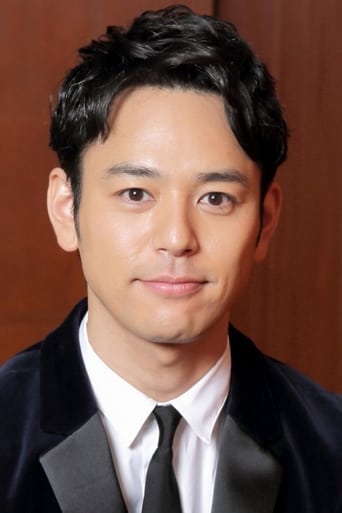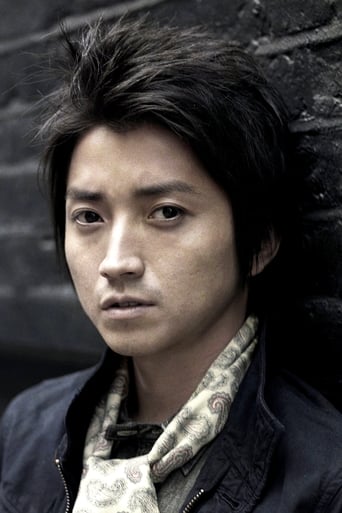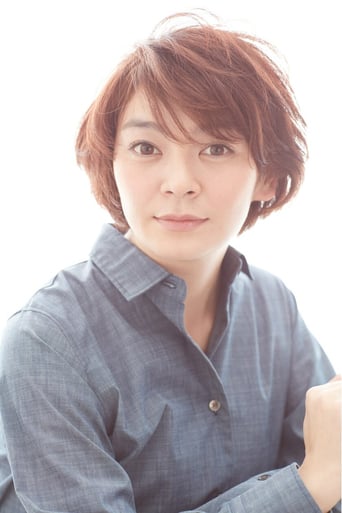dan-843-657853
The title is taken from the male protagonist of the original novel, but the screenplay changes the opening and closing to the viewpoint of one of the female characters. The central portion still features the two male characters, but we never find out what happened to them. I think this is why reviewers found the ending unsatisfying.It has an all-star cast with young up and coming actors and Kenji Sawada grown much more rotund than his younger idol days. It is reputed to be Takashi Miike's first jidaigeki period film.Technical type comment. I own two copies of this film. The ArtsMagic copy has a very good "making of film" bonus that is English subtitled. This is all too rare for Japanese films. It also has subtitled interviews with the director and cast. But sadly the transfer of the feature film is much too dark. I didn't see anything in the background, some sets are very dimly lit, and it made for a rather dreary viewing experience. I suppose the darkness suits the Dickensian nature of the story. The disc bonus menu has annoying mismatch between the titles and the place to point your cursor. A few years later, I bought a Chinese-made high-bit copy and when I viewed it I was amazed to see much more detail in the background. It much improved the viewing experience. So you need to see both to optimize experience of this Miike film. I do not own a Japan-made copy, but it could be the best of all.
a-dobbs
Think of a Takashi Miike film and what immediately springs to mind? Guns, leather coats, hit men, demons, yakuza, violence, torture and blood. Lots and lots of blood. 'Sabu', however, is far removed from the usual fare in Miike's canon. Miike has ventured into gentler waters elsewhere in his oeuvre (think 'Ley Lines', 'Bird People in China'), but 'Sabu' stands apart from these again in that it's a period drama based on a renowned Japanese novel; 'Sabu' is rather more Merchant Ivory than anything in Ichi's warped universe.The film opens with scenes describing the childhood friendship of the eponymous Sabu (Satoshi Tsumabuki), Eiji (Tatsuya Fujiwara) and Nobuko (Kazue Fukiishi) in rural seventeenth century Japan. Sabu and Eiji are orphans who are set to work for a master making paper screens. Though firm friends, their paths diverge dramatically when a bolt of gold cloth is one day reported as stolen from the workshop. Eiji is accused of the theft and, although he violently protests his innocence, he is sent away to an island prison camp as punishment.At the camp, Eiji becomes sullen and withdrawn, refusing to speak to his fellow inmates and shunning offers of friendship, making himself very unpopular in the process. Sabu, on the other hand, devotes a major part of his life in attempting to keep their friendship alive. He visits Eiji on the island, even after Eiji makes it plain he wants nothing to do with him. The extent of Sabu's friendship and almost obsession devotion to Eiji dominate most of the film's running time and is fully realised at the finale, when Sabu tries to protect Eiji from his own worst enemy – himself. In so doing, Eiji himself comes to appreciate facets of his character he wasn't previously akin too, and though both Sabu and Eiji are revealed to be flawed personalities (Eiji and his self pity, Sabu and his obsession with his friend that sees his own life slide off the rails), they come to understand both themselves and each other a little better by the time the credits roll.It's this ongoing concepts of flawed characters unable to find an inner peace that provides the engine that drives 'Sabu' along, but it's an engine that is built for a leisurely cruise, not a speedway, and the movie unfolds at a sedate pace for virtually the whole length of it's two hour running time. Although opening with a trademark unnerving/surreal shot (in this case of a hanged woman), Miike never lets the film run away with itself, preferring to let the emotions of the characters drive the plot. Indeed, 'Sabu' unfolds at the laborious pace of a nineteenth century novel, with the pace of the story telling more in keeping with Dickens or Mann than the kinetic pace fans of the director are more accustom too.Toward the middle of the film, there are scenes in the prison camp where a new prisoner arrives and starts throwing his weight around, taunting Eiji and spoiling for a fight. At this point I half expected the Miike of old to raise his head and for the protagonists to start wearing each other's blood, but to his credit, the mayhem and violence never appear. For all his restraint though, these scenes are jarring and feel shoehorned in as a kind of sop to those yearning for some violent action. They spoil the flow of the movie, serve no real purpose save introduce a subplot that never really develops and it would be no great loss if they were taken out.At times though, the whole of the plot is outshone by Miike's direction. Each shot is framed to perfection with the care and attention of a master painter, be it a haunting image of the hanging woman, a riot on a beach at night or the marvellous circularity of the opening and closing shots of a bridge spanning water. Such meticulous attention to detail almost gives 'Sabu' a picture book quality – a story told in static frames rather than motion. This is made all the more remarkable by the fact that 'Sabu' was made specifically for Japanese television, not the big screen where these images would truly shine.'Sabu' is not a film for anyone looking for a quick fix of sex and violence. What it IS however is a good illustration that the art of film-making has not yet been completely buried under an avalanche of CGI and predictability. 'Sabu' is by no means without it's flaws (the lead characters, for example, although well played, are largely unsympathetic and verge on the annoying in their cloying self pity), and there is nothing on show here to suggest that it was made on anything but the smallest of budgets. Yet the attention to detail and obvious love of the craft of film-making that has gone into every scene shine through, making 'Sabu' an immensely rewarding experience for those with the patience to follow it through to the end.
squelcho
As mentioned in another review, this film should probably have been called "Eiji", because he is certainly the focus of attention. The slight plot revolves around a perceived injustice against him and its eventual resolution. The supporting cast are more sketches than characters, but the narrative survives the demands of this televisual simplification.As a historical document it's beautiful. Perhaps Miike wanted to show, much like Kurosawa, that even in the era of the Samurai, ordinary people also led lives tinged with drama. I felt that there was a hint of predetermined running time (perhaps two one hour episodes?) which led to a bit of a lull in proceedings around the hour mark. I resolved my putative ennui by resorting to the time honoured British tea ceremony. By the time I'd finished my refreshments, the plot had picked up again, and fortified by some quality tiffin, I thoroughly enjoyed the denouement. I'd guess that this is the Japanese equivalent of those great period dramas that the BBC excels at. I don't watch television, but I would if it could consistently offer a dramatic emotional diet as rich as this.
StainBoy
Sabu is a simple, straight-forward friendship/love story with few surprises, very unlike Miike's more popular movies (which have been recognized as some of the most disturbingly shocking and violent films of all time). But what makes this movie better than just an average movie of the week is the direction. The opening 10 minutes are some of the most beautiful I have ever seen. And throughout, Miike shows everyone that he can handle a story without sex or ultra-violence with one of the greatest styles the cinema has known. The movie itself is worth seeing at least once, but the directing gives it replay value several times over.




